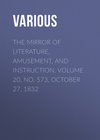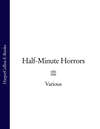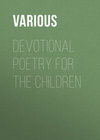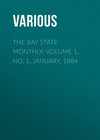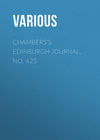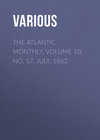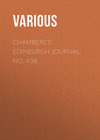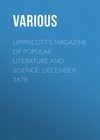Read the book: «The Mirror of Literature, Amusement, and Instruction. Volume 20, No. 573, October 27, 1832», page 3
Fielding was a contemporary member of the home-circuit, with Sergeant Bond and myself. In the performance of the duties of conviviality, over which the learned sergeant, as head of the circuit, presided, he found in Fielding a powerful auxiliary. He was the son of the author of Tom Jones, and inherited to a great degree the wit and talents of his father.
As a companion, Fielding was invariably pleasant and inimitably entertaining. His conversation abounded with anecdotes, of which he had an inexhaustible fund: his great stock was of Irish stories which he gave with great truth and humour.
I have repeatedly heard him say, that the lowest class of the Irish had more native humour than any other body of people in the same rank in life. He would then relate, in proof of it, the event of a bet which was made on the subject at one of the club-houses in St. James's Street, which then was crowded with English and Irish chairmen, and which was to be decided by the reply of one of each country to the same question. It was, "If you were put naked on the top of St. Paul's, what would you be like?" The English chairman was first called in, and the question being put to him, he ran sulky, and refused to give any direct answer, saying they were making fun of him. Pat was then introduced, and the question being propounded to him: "What should I be like?" says he; "why, like to get could, to be sure, your honours." "This," says he, "they call mother wit; and the most illiterate have a quickness in parrying the effect of a question by an evasive answer. I recollect hearing Sir John Fielding giving an instance of this, in the case of an Irish fellow who was brought before him when sitting as a magistrate at Bow Street. He was desired to give some account of himself, and where he came from. Wishing to pass for an Englishman, he said he came from Chester. This he pronounced with a very rich brogue, which caught the ears of Sir John. 'Why, were you ever in Chester?' says he. 'To be sure, I was,' said Pat; 'wasn't I born there?' 'How dare you,' said Sir John Fielding, 'with that brogue, which shows that you are an Irishman, pretend to have been born in Chester.' 'I didn't say I was born there,' says he; 'I only asked your honour whether I was or not.'"
Fraser's Magazine.
THE NATURALIST
NUTRIA FUR
[We quote the following account of Nutria from the Dictionary of Commerce, by Mr. Macculloch, who believes it to be the first description that has appeared in any English work, and acknowledges it from the pen of J. Broderip, Esq., F.R.S., &c.]
Nutria, or Neutria, the commercial name for the skins of Myopotamus Bonariensis (Commerson,) the Coypou of Molina, and the Quoiya of D'Azara. In France, the skins were, and perhaps still are, sold under the name of racoonda; but in England they are imported as nutria skins—deriving their appellation, most probably, from some supposed similarity of the animal which produces them, in appearance and habits, to the otter, the Spanish name for which is nutria. Indeed, Molina speaks of the coypou as a species of water rat, of the size and colour of the otter.
Nutria fur is largely used in the hat manufacture; and has become, within the last fifteen or twenty years, an article of very considerable commercial importance. From 600,000 to 800,000 skins, principally from the Rio de la Plata, are now annually imported into Great Britain. It is also very extensively used on the continent. Geoffroy mentions, that in certain years, a single French furrier (M. Bechem,) has received from 15,000 to 20,000 skins.
The coypou or quoiya is a native of South America, very common in the provinces of Chili, Buenos Ayres, and Tucuman, but more rare in Paraguay. In size it is less than the beaver, which it resembles in many points. The head is large and depressed, the ears small and rounded, the neck stout and short, the muzzle sharper than that of the beaver, and the whiskers very long and stiff. There are, as in the beaver, two incisor teeth, and eight molar, above and below—twenty teeth in all. The limbs are short. The fore feet have each five fingers not webbed, the thumb being very small: the hind feet have the same number of toes; the great toe and three next toes being joined by a web which extends to their ends, and the little toe being free, but edged with a membrane on its inner side. The nails are compressed, long, crooked, and sharp. The tail, unlike that of the beaver, is long, round, and hairy; but the hairs are not numerous, and permit the scaly texture of the skin in this part to be seen. The back is of a brownish red, which becomes redder on the flanks: the belly is of a dirty red. The edges of the lips and extremity of the muzzle are white.
Like the beaver, the coypou is furnished with two kinds of fur; viz. the long ruddy hair which gives the tone of colour, and the brownish ash-coloured fur at its base, which, like the down of the beaver, is of such importance in hat-making, and the cause of the animal's commercial value.
The habits of the coypou are much like those of most of the other aquatic rodent animals. Its principal food, in a state of nature, is vegetable. It affects the neighbourhood of water, swims perfectly well, and burrows in the ground. The female brings forth from five to seven; and the young always accompany her.
The coypou is easily domesticated, and its manners in captivity are very mild.
NOTES OF A READER
RECORDS IN THE TOWER OF LONDON
(From the Edinburgh Review, just published.)
[These stores are of invaluable interest, particularly with reference to the earlier and most obscure portions of our history.]
An immense collection of royal letters and state papers, miscellaneous rolls relating to the revenue, expenditure, debts and accounts of the Crown, New Year's gifts, the royal household, mint, foreign bills of exchange, military and naval affairs, instruments relating to treaties, truces, and infractions of peace, chiefly between England and France; mercantile matters, foreign possessions of the Crown, proceedings in the Admiralty, military and other courts of the great officers of the Crown, pardons, protections, petitions, subsidy rolls, Scotch homage rolls, pardon rolls, privy seals, signet bills, writs of various descriptions from Edward I. to Edward IV., exist there, without calendar or index; and in such masses as to defy the patience of any inquirer, however ardent. It need not be said that in such a variety of documents their value must vary considerably, or that many of them are of little use; but each of them is at least worthy of being examined; and there are few of them which, if properly scrutinized by apt labourers, would not at least contribute to the elucidation or ratification of some branch of history. Some of them would render still more important services; and, by pointing out the daily habits and most familiar occurrences of the lives of our kings and other eminent personages who figure in our history, lead us to a much more accurate estimate of their genius than any that has hitherto been formed. With this view, the close rolls are amongst the most minute and interesting of those documents which remain unexplored. The character of King John has had but scanty justice done to it; and perhaps those who have formed their notions of that monarch from the ordinary accounts of him, will be surprised to find him writing to the Abbot of Reading to acknowledge the receipt of "six volumes of books, containing the whole of the Old Testament, Master Hugh de St. Victor's treatise on the Sacraments, the Sentences of Peter Lombard, the Epistles of St. Augustine on the City of God, and on the 3rd part of the Psalter, Valerian de Moribus, Origen's treatise on the Old Testament, and Candidus Arianus to Marius;"—and that on another occasion shortly afterwards he acknowledges the receipt of "his copy of Pliny," which had been in the custody of the same Abbot. Still less does it consist with the commonly adopted notions of his selfish tyranny, that he should address Bryan de Insula in terms like the following: "Know that we are quite willing that our chief barons, concerning whom you wrote to us, may hunt while passing through your bailiwick, provided that you know who they are and what they take; for we do not keep our forests, nor our beasts, for our own use only, but for the use also of our faithful subjects. See, however, that they are well guarded on account of robbers, for the beasts are more frightened by robbers than by the aforesaid barons." Of the reign of Henry III. the particulars are still more minute. Notwithstanding its connexion with superstitions which exist no longer, we may sympathize with the pious charity that suggested that monarch's order "for feeding as many poor persons as can enter the greater and lesser hall at Westminster on Friday next after the octaves of St. Matthew, being the anniversary of Eleanor, the King's sister, formerly Queen of Scotland, for the good of the said Eleanor's soul." His taste for the fine arts, and his encouragement of its professors, are frequently to be traced in the entries upon these rolls. In one of them he gives directions for having the great chamber at Westminster painted with a good green colour after the fashion of a curtain; and in the great gable of the same chamber near the door this device to be painted,—"Ke ne dune ke ne tine, ne prent ke desire;" and another runs thus,—"The King, in presence of Master William the painter, a monk of Westminster, lately at Winchester, contrived and gave orders for a certain picture to be made at Westminster in the wardrobe where he was accustomed to wash his face, representing the King who was rescued by his dogs from the seditions which were plotted against that King by his subjects, respecting which same picture the King addressed other letters to you Edward of Westminster. And the King commands Philip Lavel his treasurer, and the aforesaid Edward of Westminster, to cause the same Master William to have his costs and charges for painting the aforesaid picture without delay; and when he shall know the cost, he will give them a writ of liberate therefor." For the illustration of the elder historians, and as a means of ascertaining how far narrations of events which appear doubtful or improbable, are correct, these and other buried documents possess great value. That blackest charge against the memory of King John, by which he is implicated in the murder of his nephew Prince Arthur, has been brought forward in forms so various, that common charity has induced many men to withhold their credence from an accusation which rests on vague and uncertain traditions. It is said, however, that Arthur's death, by whatever means it was brought about, took place at Rouen; it has been ascertained very lately for the first time, by inspection of the attestations of records, that John was at that place on that day; a circumstance not in itself enough to lead men to a very violent suspicion of his guilt, if the manner of the Prince's death had not been sudden and mysterious; but which, bringing the charge at least somewhat nearer, may probably lead to further discoveries. Of less importance, but yet not without interest,—if it be interesting to know accurately the early manners of a people, and to trace their progress from periods when those lights of science which are now beaming in full radiance over the land, had just begun to glimmer above the horizon,—is the following instance. Matthew Paris relates, that in 1255, an elephant was sent by the King of France to Henry III., and that it being the first animal of that species that had been seen in England, the people flocked in great numbers to behold it. Upon the close rolls is entered a writ tested at Westminster the 3rd of February, 39, H. III. (1255,) directing the sheriff of Kent to "go in person to Dover, together with John Gouch, the King's servant, to arrange in what manner the King's elephant, which was at Whitsand,12 may best and most conveniently be brought over to these parts, and to find for the same John a ship and other things necessary to convey it; and if, by the advice of the mariners and others, it could be brought to London by water," directing it to be so brought. That the stranger arrived safely, is evident from a similar writ, dated the 23rd of the same month, commanding the Sheriffs of London to "cause to be built at the Tower of London, a house forty feet in length and twenty in breadth, for the King's elephant." Economy however, it seems, was not neglected by the monarch in his menus plaisirs; for the Sheriffs are expressly charged to see that the house be so strongly constructed that, whenever there should be need, it might be adapted to and used for other purposes; and the costs are to be ascertained "by the view and testimony of honest men."
